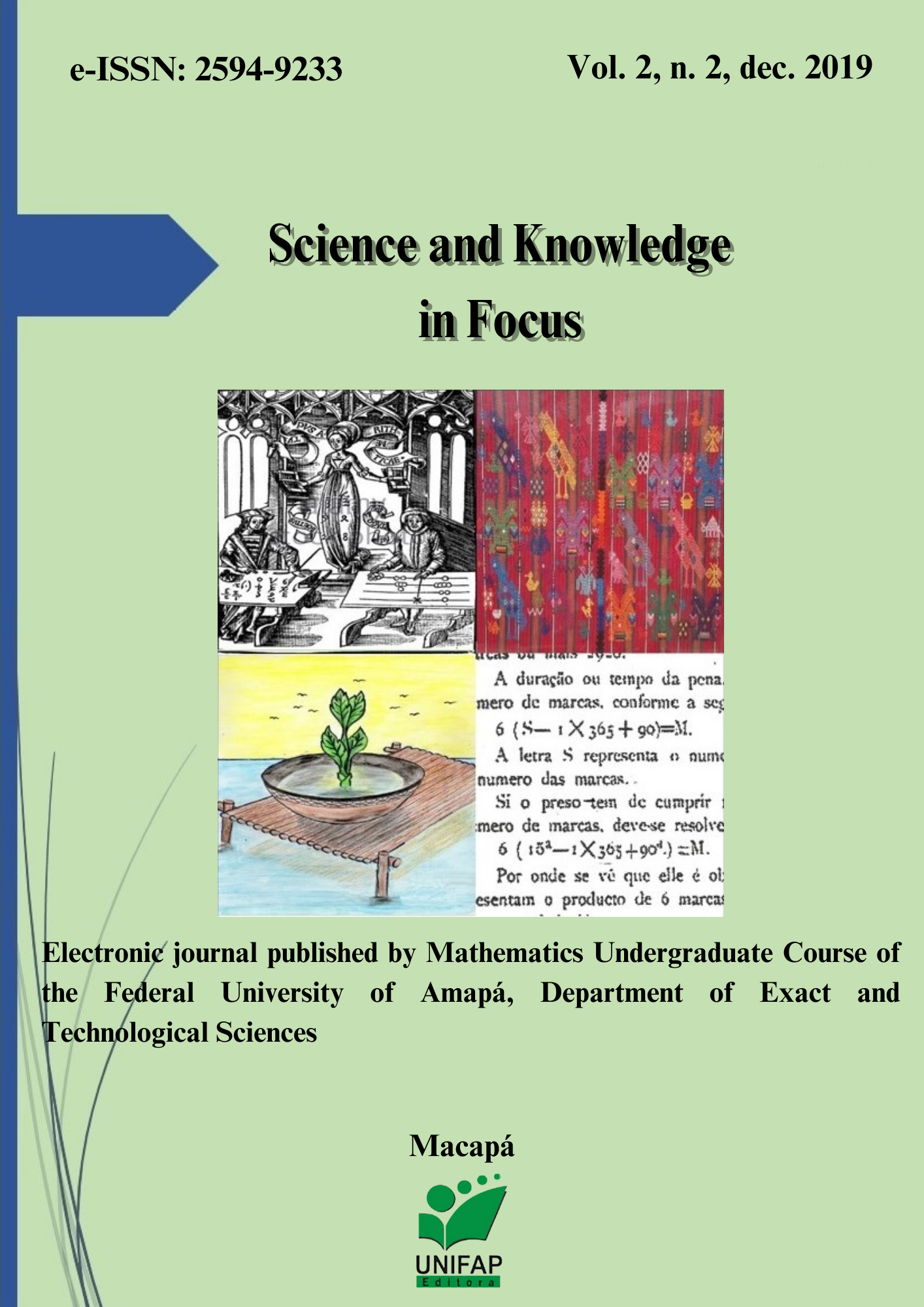Galibi-Marworno Mark and Mathematics Teaching
a research in ethnomathematics
Keywords:
Indigenous School Education, Research in Ethnomathematics, Galibi-Marworno Mark, Mathematics Teaching, Indigenous SchoolAbstract
The paper analyzes cultural representations of thirteen indigenous marks and their use in math teaching in the Indigenous School Education. We collected the data at Kumarumã village located in the Uaça indigenous land (Oiapoque) in Brazil based on qualitative research and interviews realized with a shaman, two indigenous artisans, and two non-indigenous teachers. The text was pro-duced using the descriptive method and cited the result of the first study in Ethnomathematics deve-loped in the Indigenous Intercultural Undergraduate of the Federal University of Amapá, in Exact and Nature Sciences. Indigenous marks represent objects of nature and leading to the place where Galibi-Marworno indigenous live, according to the explanations of the shaman and artisans Galibi-Marworno. They exemplified in the interviews, the marks according to their writing in the Creole Language (Kuahí, Thas Djiab, Pataje Kasab, Bhãx Uasei, Thas Fomi Mãiok, Uei Sarakurá, Kai atxipa, Dã Djilo, Kai Txuhi, Iarari, Papiõ, Zétuel Warukamã e Ximê dji Lavi). Respectively, these Galibi-Marworno marks represent the (Cruari fish, relief and beauty of the firm earth, traces of the fingers on the surface of the beiju, açaí leaf, leafcutter ant trail, eye of the bird saracura, tamuatá fish scale, salt air or wave of the sea, pirarucu fish scale, cloud of the dawn, butterfly, dalva star and way of life). The other interviews revealed that mathematics teachers do not know that they mean and represent the Galibi-Marworno marks. Even son, they develop a teaching practice that includes the marks in the math classes from the drawings elaborated by Galibi-Marworno students when they solve school ac-tivities.




















 A revista eletrônica Science and Knowledge in Focus é publicada pela editora da Universidade Federal do Amapá e editada pelo Curso de Graduação em Matemática, vinculada ao Departamento de Ciências Exatas e Tecnológicas.
A revista eletrônica Science and Knowledge in Focus é publicada pela editora da Universidade Federal do Amapá e editada pelo Curso de Graduação em Matemática, vinculada ao Departamento de Ciências Exatas e Tecnológicas.